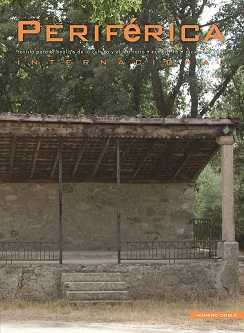Turismo cultural y desarrollo regional: la metrópolis como referencia

DOI
https://doi.org/10.25267/Periferica.2014.i15.30Información
Resumen
La capacidad de un museo en contribuir al desarrollo regional es el tema de este artículo. La implantación de una institución cultural en un territorio dominado por la minería y que se transformó en un atractivo turístico se presentó como un caso relevante para investigar la influencia del turismo cultural en el desa rrollo regional. Se ha tratado de verificar si es posible convertir los activos del turismo cultural en beneficios tangibles para la población de un territorio, incluyendo a los menos favorecidos. Para esta reflexión la primera tarea fue definir lo que es desarrollo, medir los impactos tangibles e intangibles de la actividad turística en un territorio y analizar su contribución al desarrollo local y regional. Los impactos tangibles o económicos fueron determinados al utilizar un modelo de equilibrio general computable y los impactos intangibles o sociales por medio de métodos cualitativos de análisis. Se ha verificado que el mayor impacto económico ocurre en la metrópoli regional, donde el impacto en el PIB es el más significativo. De esta manera, la metrópoli se fortalece como centro hegemónico, polarizador de actividades culturales.
Palabras clave: museo; desarrollo; turismo cultural; impactos; metrópoli regional.
Abstract: The subject of this article is the capacity of a museum to contribute to regional development. The implantation of a cultural institution in an area dominated by mining and which was transformed into a tourist attraction, seemed to be a relevant case for research into the influence of cultural tourism on regional development. We have tried to check whether it is possible to turn the assets of cultural tourism into tangible benefits for the population of a region, including the less fortunate. For this reflexion, the first task was to define development, measure the tangible and intangible impacts of tourist activity in the region and analyse its contribution to local and regional development. The tangible or economic impacts were determined by using a computable general equilibrium model and the intangible or social impacts by means of qualitative methods of analysis. It has been verified that the greatest economic impact occurs in the regional metropolis, where the impact on the GDP is more significant. In this way, the metropolis is strengthened as a hegemonic centre, a polariser of cultural activities.
Keywords: museum; development; cultural tourism; impacts; regional metropolis.
Artículo recibido: 28/09/2014. Aceptado: 17/10/2014
Palabras clave
Descargas
Cómo citar
Licencia

Este obra está bajo una licencia de Creative Commons Reconocimiento-NoComercial-SinObraDerivada 4.0 España.






